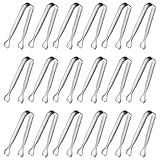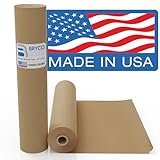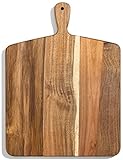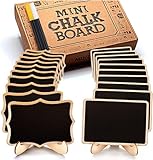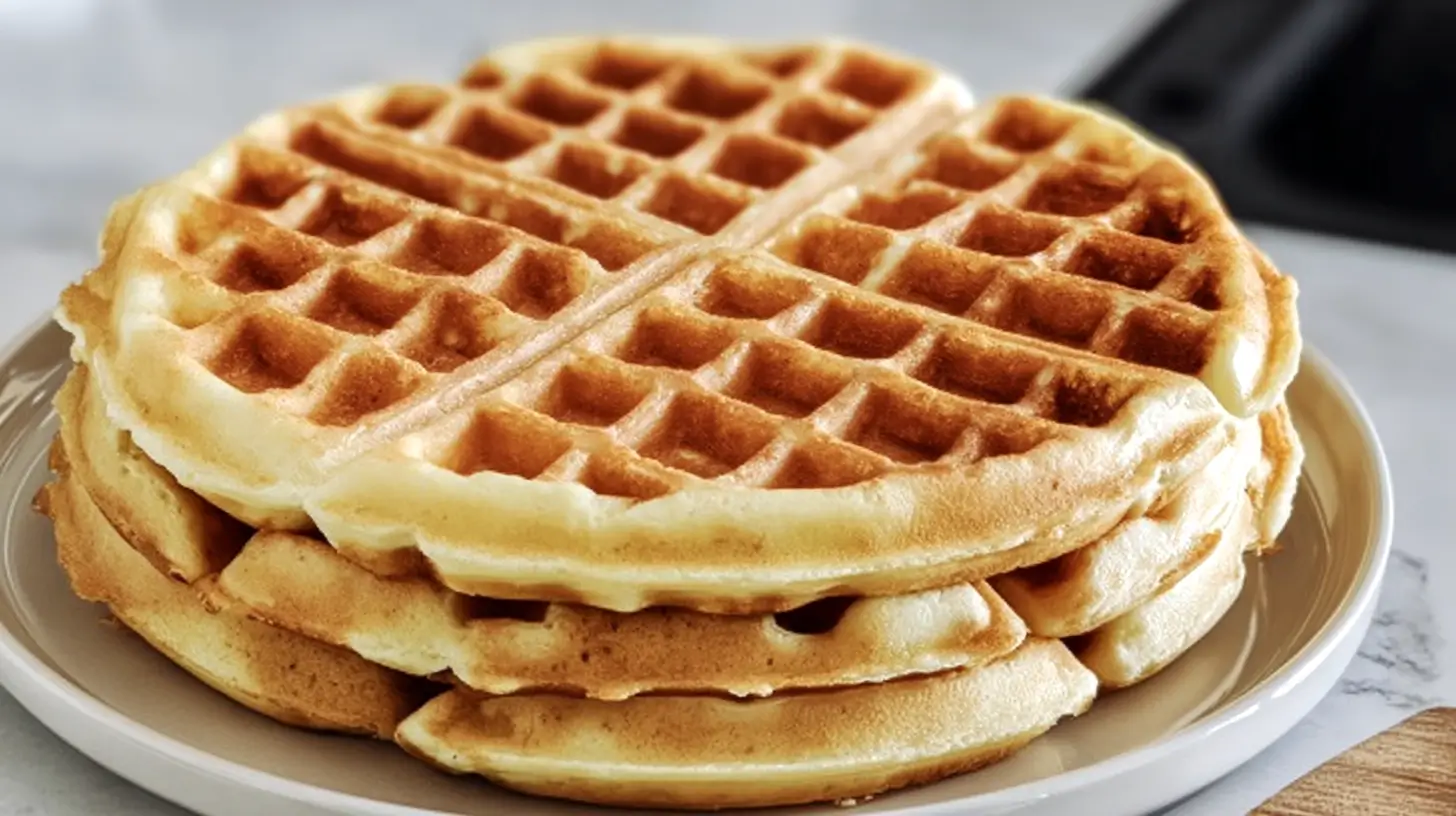Creating a grazing table is one of the easiest ways to wow your guests, whether it’s for a casual family gathering or a larger celebration. The concept of a grazing table isn’t new, but it’s taken off recently because it blends style, convenience, and variety in one appealing package. The best part? You don’t need to be a professional chef or event planner to pull it off. All you need is some basic know-how, a bit of creativity, and an understanding of what your guests might enjoy. Let’s break down the essentials so you can confidently put together your own grazing table that’s as delicious as it is visually appealing.

This site contains affiliate links; please take a look at the disclosure for more information.
What Is a Grazing Table?
A grazing table is essentially a larger, more elaborate version of a charcuterie board. It’s a spread of various foods, like cheeses, meats, fruits, nuts, and snacks, laid out on a table in a way that’s designed to be visually appealing and easy for guests to grab a bite. Unlike a traditional meal where everyone has a set place, a grazing table encourages mingling and offers something for everyone. It’s perfect for events where you want to keep things casual but still provide an impressive food display.
Setting Up the Grazing Table
Before you start putting food on the table, it’s important to set up a good foundation. You’ll need a sturdy table, preferably one that’s large enough to accommodate a variety of foods. If your table is smaller, don’t worry—you can always get creative with the layout by using different levels or adding risers to create more space.
Once you have the table, cover it with butcher paper or a simple tablecloth. This serves two purposes: it protects your table and also gives you a clean canvas to arrange your food. If you’re feeling fancy, you can add some greenery, like eucalyptus branches or fresh herbs, to give your table a more natural and organic feel.

Choosing the Right Foods
When it comes to what you’ll include on your grazing table, variety is key. The beauty of a grazing table lies in its diversity, so think about offering a mix of flavors and textures. Start with the basics: cheeses and meats. Go for a mix of soft and hard cheeses, like brie and cheddar, and include different types of cured meats, like salami and prosciutto.
Next, add in some fresh elements. Fruits are a must—grapes, berries, and sliced apples are all great options. They add not just a pop of color but also a sweet contrast to the savory items. Veggies like cherry tomatoes, carrots, and cucumbers also work well, especially when paired with dips like hummus or ranch dressing.
Don’t forget about the carbs. Bread and crackers are essential for any grazing table. Offer a selection of both, including different types of crackers and sliced baguettes. For a bit of crunch, toss in some nuts and seeds. And for a touch of sweetness, add some chocolate or honey. The goal is to create a balance of flavors, so there’s something for every palate.
Arranging the Grazing Table
Now that you’ve gathered all your foods, it’s time to start arranging. This is where you can really get creative. Start by placing the larger items on the table first—think cheese blocks, large bowls of dips, or a big bunch of grapes. These will serve as your anchors and help you map out the rest of the table.
Once the bigger items are in place, start filling in the gaps with smaller items like meats, fruits, and nuts. Don’t worry too much about symmetry—part of the charm of a grazing table is its slightly messy, abundant look. You want the table to feel full and inviting, so pile things up and let items overlap.
If you’re working with a smaller table, consider adding height by placing some items on raised platforms or stacking them. For example, you can use a cake stand for a block of cheese or a bowl of fruit. This adds visual interest and allows you to fit more food on the table.

Step-by-Step Setup of a Grazing Table
Creating a grazing table from scratch can seem a bit overwhelming, but breaking it down into manageable steps makes it much easier. Here’s a step-by-step guide to help you through the process, including all the materials and foods you’ll need.
Grazing Table Materials Needed:
- Table or Surface: A sturdy table is essential. Make sure it’s large enough to hold all the food, or plan to use different levels to maximize space.
- Table Cover: Use butcher paper, a tablecloth, or even a wooden board as your base. This will protect your table and provide a clean surface for your food.
- Platters, Boards, and Bowls: You’ll need an assortment of platters, wooden boards, and bowls to hold your food. These can be of different shapes and sizes to add variety to your display.
- Utensils: Have cheese knives, tongs, and small serving spoons on hand for guests to serve themselves easily.
- Small Plates and Napkins: Provide small plates and napkins so guests can take their selections and continue mingling.
- Decorative Elements (Optional): If you want to add a touch of greenery or flowers, have some eucalyptus branches, fresh herbs, or small floral arrangements ready.
Mini Serving Tongs
These stainless steel mini serving tongs come in an 18-pack, making them ideal for various occasions like parties or daily use, and are elegantly packaged for gifting. With a heart design, anti-slip handle, and made from durable, dishwasher-safe stainless steel, they are perfect for serving a variety of small foods, from sugar cubes to marshmallows.
Foods Needed:
-
Cheeses:
- Soft Cheese: Brie, Camembert, goat cheese.
- Hard Cheese: Cheddar, Gouda, Parmesan.
- Blue Cheese: Roquefort, Gorgonzola.
-
Cured Meats:
- Salami, prosciutto, chorizo.
- Pâté or terrine if you want to add something different.
-
Fruits:
- Fresh: Grapes, berries, figs, sliced apples, and pears.
- Dried: Apricots, cranberries, dates.
-
Vegetables:
- Fresh: Cherry tomatoes, carrots, cucumbers, bell peppers.
- Pickled: Olives, gherkins, pickled onions.
-
Crackers and Bread:
- Crackers: Water crackers, whole grain, seeded.
- Bread: Sliced baguette, breadsticks, pita chips.
-
Dips:
- Hummus, guacamole, tzatziki, artichoke dip.
-
Nuts and Seeds:
- Almonds, walnuts, cashews, pumpkin seeds.
-
Sweets:
- Dark chocolate, honeycomb, chocolate-covered nuts.
-
Extras:
- Jams or chutneys: Fig jam, red onion chutney.
- Fresh herbs for garnish: Rosemary, thyme.
Butcher Paper Roll
This brown paper is unbleached, food grade, and reinforced for durability, making it ideal for grilling, wrapping, and various other uses. It’s a versatile option that maintains strength and prevents sogginess, outperforming foil in smoke retention and steam release.
Step-by-Step Grazing Table Setup
- Prepare the Table: Start by covering your table with butcher paper, a tablecloth, or a wooden board. This will protect the surface and create a clean canvas for your arrangement.
- Place Large Items First: Arrange larger items like cheese blocks, big bowls of dips, and large fruit bunches on the table. These serve as the anchors for your layout.
- Add Platters and Bowls: Distribute platters and bowls around the larger items. Use them to hold meats, cheeses, and dips, ensuring they’re easy for guests to access.
- Layer in the Meats: Fan out or roll up cured meats like salami and prosciutto. Place them near the cheeses, creating natural pairings.
- Fill in with Fruits and Veggies: Add fresh fruits and vegetables to fill gaps between the larger items. Scatter grapes, place berries in clusters, and arrange sliced veggies for a colorful display.
- Include Carbs: Place crackers and bread around the table. Stack sliced baguettes or arrange crackers in small piles for easy grabbing.
- Scatter Nuts and Sweets: Use nuts and sweets to fill any remaining spaces. Place them in small bowls or directly on the table for a rustic look.
- Add Dips and Extras: Place dips, jams, and chutneys in small bowls near related items. These extras add flavor and variety to your grazing table.
- Final Adjustments: Step back and assess your table. Adjust the layout to ensure it looks full and balanced, making any necessary tweaks.
- Set Utensils and Plates: Place cheese knives, tongs, and spoons near the appropriate items. Set small plates and napkins nearby for guests.
Acacia Charcuterie Board
This charcuterie board is crafted from all-natural acacia wood, featuring a thick, durable chopping surface and a long, slip-resistant handle. It’s designed for multipurpose use in food prep and serving, and is easy to clean with dimensions of 17″ x 13″.
Tips for Success
One of the most important things to keep in mind when setting up a grazing table is to make it accessible for your guests. Make sure there are plenty of utensils, like cheese knives and tongs, so people can easily serve themselves. You’ll also want to provide small plates and napkins nearby, so guests can grab what they like and continue mingling.
It’s also a good idea to think about the flow of your event. If your grazing table is the main food option, place it in a central location where people can easily access it. If it’s more of a snack or appetizer setup, consider placing it off to the side, so it doesn’t disrupt the main event.
Keeping It Fresh
Since a grazing table is meant to be enjoyed over the course of several hours, you’ll want to make sure everything stays fresh. Avoid foods that spoil quickly, like anything dairy-based that isn’t kept cold. If you do include perishable items, consider placing them on a tray that can be easily swapped out or replenished as needed.
Another tip is to keep backups of certain items in the kitchen. As the event goes on, you can refresh the table with new foods, ensuring that there’s always something available for guests to enjoy.
Adding Personal Touches
One of the best things about creating a grazing table is that you can really make it your own. Personalize it with items that reflect your taste or the theme of your event. For example, if you’re hosting a summer party, include seasonal fruits like watermelon or strawberries, and add some fresh flowers for a bright, cheerful look.
You can also add a bit of fun by labeling some of the items on your table. Small chalkboard signs or handwritten labels can let guests know what’s on offer, and it’s a nice touch that shows you’ve put thought into your setup.
Mini Chalkboard Signs
These multi-functional mini chalkboard signs are perfect for labeling food, organizing spaces, or leaving messages at events. Made of sturdy, erasable wood, they come with removable stands for easy use and storage, making them versatile and practical for any occasion.
Grazing Table Ideas for Different Occasions
While the basics of setting up a grazing table remain the same, you can tweak the theme depending on the occasion. For a holiday gathering, you might want to include seasonal items like cranberry sauce, spiced nuts, or a cheese shaped like a Christmas tree. For a summer get-together, think lighter options like fresh salads, cold cuts, and lots of fresh fruit.
If you’re hosting a brunch, consider adding breakfast items like mini pancakes, bagels, and yogurt with granola. For a more elegant affair, include gourmet cheeses, smoked salmon, and a variety of olives and pickles.
Final Thoughts
Putting together a grazing table is a lot easier than it might seem at first glance. With a bit of planning and some creativity, you can create a spread that’s not just delicious, but also a feast for the eyes. Remember to focus on variety, balance, and presentation. Keep your guests in mind as you select your items, and don’t be afraid to put your own spin on things.
The next time you’re hosting an event, whether big or small, consider making a grazing table the centerpiece of your food offerings. It’s a sure way to impress your guests while keeping things relaxed and enjoyable. Plus, it’s an opportunity to showcase your own personal style and taste, making your gathering that much more memorable.

